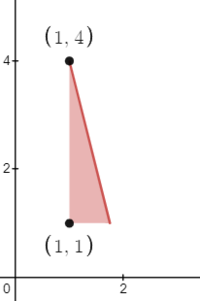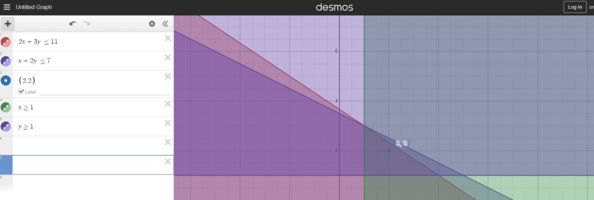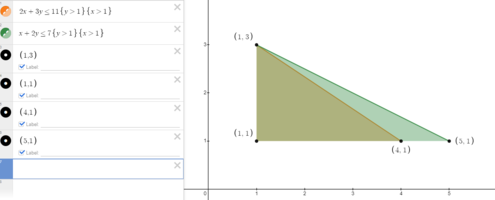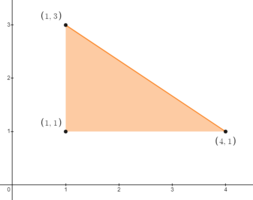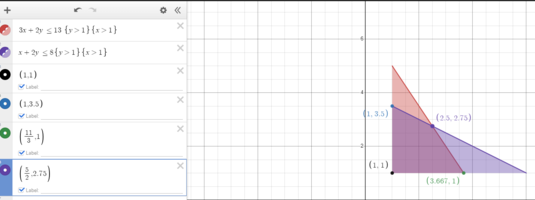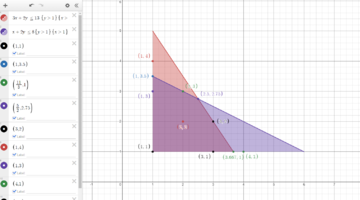Hi all,
If there is an area enclose by any two linear equations( the two equations are always smaller than something like below) and the x- axis and y-axis so it forms a quadrilateral.
how do i find the max(x+y) where x and y has to be an integer and x and y has a minimum value of 1.
Is there any fast way instead of brute force as x and y can be very large?
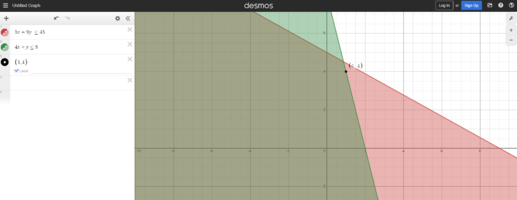
If there is an area enclose by any two linear equations( the two equations are always smaller than something like below) and the x- axis and y-axis so it forms a quadrilateral.
how do i find the max(x+y) where x and y has to be an integer and x and y has a minimum value of 1.
Is there any fast way instead of brute force as x and y can be very large?


